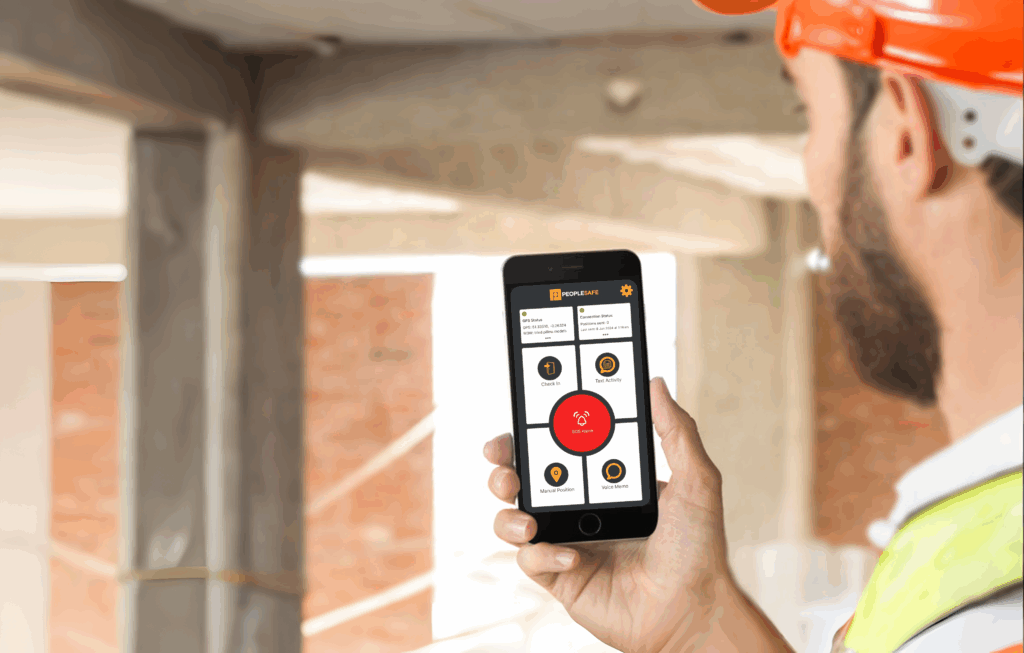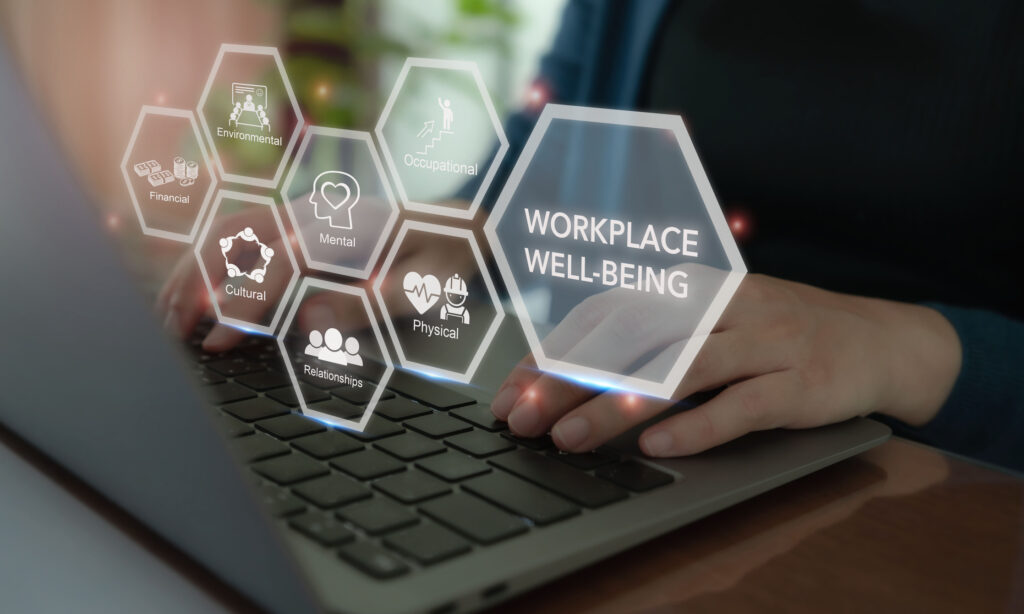Looking After Mental Wellbeing When Working From Home
The advancement and rise in technology and a cultural shift following the pandemic have enabled more job roles and tasks to be completed away from the office. As a result, the traditional 9-5 view of work has been disrupted, with employees looking for more flexibility and freedom from their jobs.
While remote working can boost employee wellbeing by offering flexibility and freedom on the one hand; on the other, working from home can be lonely and isolating.
According to the HSE stress, depression and anxiety accounted for 50% of all work related ill health in 2021/22. Typically, working from home involves lone working for the majority of the day. If employees are doing this for extended periods of time, their mental health may suffer from a lack of human interaction.
As an employer or manager, you have a duty to take care of your staff’s welfare. This includes pre-existing mental health problems, as well as doing what you can to prevent any issues from arising. When employees work from home for long periods, they may experience common wellbeing problems, including the below:
Blurred boundaries between work and home life
It can be difficult to separate work and home life when your home doubles as your office. The ‘always on’ culture can make it difficult to switch off and have the necessary breaks to stay refreshed. This can be worse for people that live alone without another person to monitor the length of their work days.
Feeling isolated
Not being able to physically interact with other members of the team or business can lead remote workers to feel like they’re less a part of the organisation. It’s easy to forget to reach out and check on employees working from home. Talking about non-work-related things with colleagues is just as important for mental health as getting the work done.
Lack of motivation
Being a lone worker is tough. Without a manager sitting nearby or other people around, some people might find it hard to motivate themselves to sit at their workstation and complete their tasks.
Lack of collaboration
Creativity is often encouraged by collaboration. When staff aren’t regularly interacting with, and challenging each other, it can impact the standard of the work that’s produced.
Mental wellbeing is intrinsically linked to happiness; to succeed, businesses have to make mental health a priority. It’s widely accepted that happy and engaged employees are more motivated and productive. Moreover, sick leave, staff turnover and business wastage are all reduced.
Recognising Mental Health Struggles in Colleagues
Although people are speaking about mental health more and more, it’s still a difficult topic to open up about. Being able to spot mental health struggles can help to start a conversation. Despite working from home, you might start to be concerned about a lone working colleague if they show some of the following behaviours:
- Uncharacteristic mistakes
- Missing deadlines
- Appearing distracted (e.g. on calls or video conferences)
- Isolating themselves from usual conversation or activities (e.g. not replying on an instant messaging forum)
- Being short-tempered or having outbursts of anger
- Looking tired or drained
Mental health is a sensitive subject – when approaching someone you suspect is struggling, keep it simple and start by asking how they are. They need to feel comfortable talking to you, so don’t impose yourself on them or pressurise them into discussing their state of mind.
When this person is working from home, this conversation shouldn’t be in text form. Preferably, have a video chat so that you can observe their body language and facial expressions. If not, a standard phone call will still enable you to listen to their tone.
Tips To Work Well From Home
Remote working for prolonged periods takes a lot of getting used to; however, there are certain things you can do to look after your mental wellbeing as a lone worker.
Structure your day
A common problem of working from home is the blurred boundaries from work and home life. Without the act of travelling to and from work, it can be difficult to differentiate between home and work space. Building a structure for your day can help to implement a routine – for example, wake up at the same time you would if you were travelling to the office.
Work From Home Tip: Take a short walk around your neighbourhood just before your start time to emulate arriving at the office.
In addition, make sure you pencil in a lunch break and regular time away from your screen. If you were in the office, you would get up to make a drink or go to the printer. You would also look away from your screen to have conversations with other people in the office.
At the end of the day, turn your computer off and walk away from it. Don’t feel bad about not checking your emails. You should stop working at the normal time.
Still do the basics
Your physical health and mental health are intertwined, so it’s important to eat well, sleep well and exercise. If you wake up at your normal time, you should have some extra time at the beginning of the day which you could use to read, listen to a podcast or do some exercise. Similarly, if you finish at the normal time, you will have more time in the evening that you could use to try out a new recipe.
If you don’t have a gym membership or you don’t want to leave your home to exercise, there are plenty of online exercise routines that you can do from your front room.
Vary forms of communication
When you’re working from home, it’s easy to rely on text-based forms of communication such as emails, instant messengers and intranets, but they lack the interaction of face-to-face and verbal conversation.
Make sure to use different forms of communication: make a phone call or participate in a video chat. Managers could schedule a video catch-up at the start and/or end of the week with some time set aside to discuss non-work-related items so that you don’t feel isolated from so-called ‘water cooler chat’.
While video conference calls can be awkward and difficult to coordinate, they’re a much quicker way of communicating and help remote workers to feel less disconnected.
NOTE: Everyone in the video conference should have their video turned on so that it feels as though you’re interacting with people and not just a screen.
Have access to appropriate IT support and guidelines
Normally, the most well-known faces in an office environment are the IT team. There is always an IT issue to be fixed somewhere in the business. With that in mind, people working from home need to have access to IT support when there is an inevitable technical issue. Providing this support will enable remote workers to solve IT problems quickly and allow them to be fully productive while away from the office.
Be aware of resources for support on mental health and wellbeing
As a lone worker, you are more susceptible to mental wellbeing issues; working from home physically isolates you from the office and the rest of the business. If left unchecked, home workers can develop feelings of loneliness, stress, depression and anxiety amongst other mental health conditions.
Some businesses offer an Employee Assistance Program (EAP) to their staff or have a mental health first aider to support employee mental wellbeing. The HR department will be able to direct you to any internal resources, as well as external resources for more information about supporting your mental health.
Ask “how are you?”
Take time to ask colleagues how they are and listen for the answer. Give people an opportunity to share if they’re struggling. When someone asks how you are, lead by example and share how you’re feeling. Often, just the simple act of saying it out loud helps and lets others know they can be honest if they’re struggling too.

Home Workers Are Lone Workers
Poor mental health is a risk that should be high on the agenda for all organisations, particularly if you have employees working from home and in isolation from the rest of the business. Worthwhile Training’s Nicole Vazquez suggested that employers need to be aware that their home workers are lone workers and should be treated as such, particularly when it comes to mental health and wellbeing. This is backed up by the HSE, who in 2020, extended their guidance to consider home workers as lone workers.
Although working from home might not present any immediate lone working risks, what happens if employees aren’t visible online when they should be? They could be suffering from stress and anxiety linked to their workload and become withdrawn. Remote working employees should be expected to regularly check in and have the number of a supervisors who can be contacted easily.
Regular home workers consistently identify feelings of isolation from other people and from the organisation. Managers should check in with members of their team working from home at least once a day; otherwise, they could easily go a whole day without having a meaningful conversation with another person. Similarly, employers have the responsibility to keep all their staff informed of organisational changes. The business could send out a weekly update letting staff know about company news, campaigns, events and details of any staff who have left.
Employers looking to go a step further in protecting their home workers could consider implementing a low cost SOS app. A solution such as the Peoplesafe SOS App will allow users to raise an alarm to expertly trained controllers in the event of an emergency. These systems can improve peace of mind and feelings of safety, reducing the major mental health trigger of long-term worry.
The service operates round the clock which means that employers can provide staff with the benefit of feeling safe both inside and outside of working hours. Whether commuting during unsociable hours, walking to a car park off site or meeting up with friends outside of work, users can access the Peoplesafe ARC and receive the expert level protection whenever it is needed.





